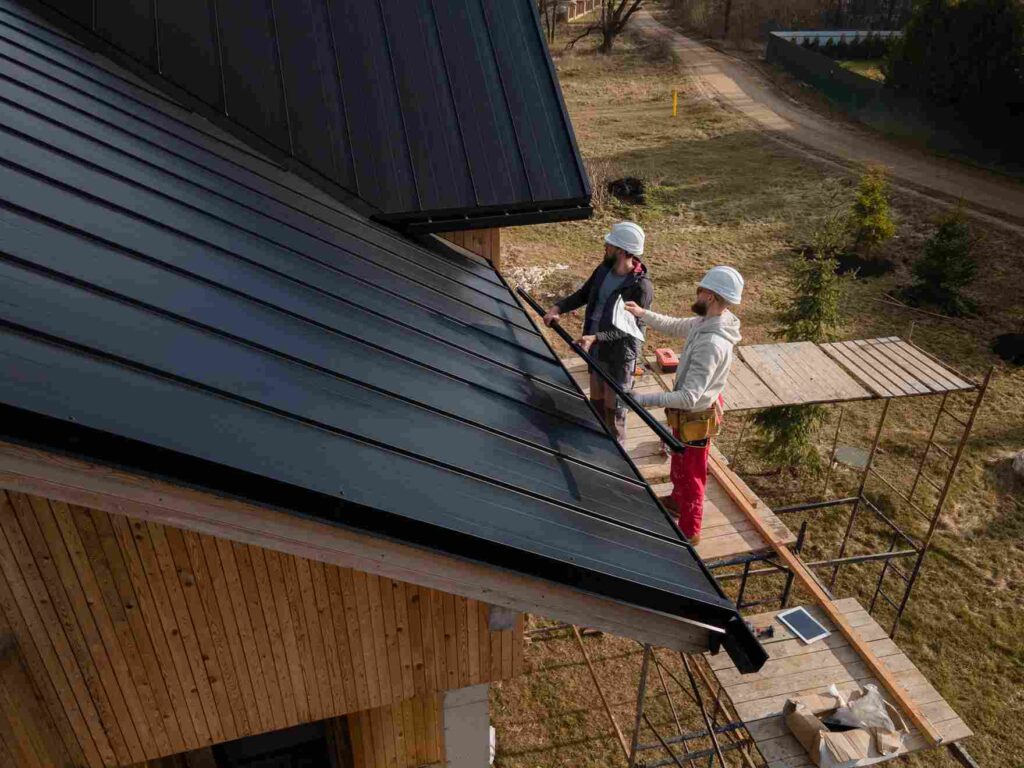Every house has a roof, and every homeowner knows just how important that roof is. It keeps us dry when it rains, warm when it’s cold, and safe from the elements all year round. But not everyone understands the ins and outs of roofing, which is essential when it’s time for repairs or a new roof. Here’s a simple guide to help you get a handle on what roofing is all about.
What is Roofing?
Roofing is the material that covers the top of a house. It’s designed to protect the building from rain, snow, sun, and wind. There are many types of roofing materials available, each with its pros and cons. Knowing a bit about each type can help you make the best choice for your home.
Types of Roofing Materials
- Asphalt Shingles: These are the most common roofing materials. They’re affordable, easy to install, and come in many colors.
- Metal: Metal roofs are durable and long-lasting. They can handle extreme weather well and are good for places that get lots of snow or strong winds.
- Tile: Tile roofs look beautiful and can last a long time. They’re heavy and require strong support, so they might not be suitable for every home.
- Wood Shingles: Wood offers a natural look and provides good insulation. However, it needs regular maintenance to prevent rot and damage.
- Slate: Slate is very strong and can last for decades, even centuries. It’s expensive but considered a premium roofing material.
Why Proper Installation Matters
Putting a roof on a house isn’t just about laying down materials. If a roof isn’t installed correctly, it can lead to big problems like leaks or tiles blowing off in a storm. That’s why it’s crucial to hire skilled professionals who know exactly what they’re doing. A well-installed roof will last longer and provide better protection for your home.
Keeping Your Roof in Good Shape
Taking care of your roof is key to preventing costly repairs later on. Here are a few things you can do to keep your roof in top condition:
- Regular Checks: Look over your roof a couple of times a year, especially after big storms. Check for cracked or missing shingles and any signs of wear and tear.
- Clean the Gutters: Keep your gutters clear of leaves and debris. Blocked gutters can cause water to back up and damage your roof.
- Trim Trees: Overhanging branches can scratch your roof and drop debris that clogs gutters. Keeping trees trimmed back from your house helps protect the roof.
Energy Efficiency and Your Roof
Your roof can also help you save money on your energy bills. Certain roofing materials reflect sunlight and heat away from your home, keeping it cooler in the summer without relying heavily on air conditioning. Some roofs are even designed as “cool roofs,” reflecting more sunlight and absorbing less heat than standard roofs.
What Does Roofing Cost?
The price of a new roof can vary a lot depending on the size of your house and the material you choose. While asphalt shingles might be your most budget-friendly option, investing in materials like metal or slate could save you money in the long run because they last longer and need fewer repairs.
Final Thoughts
Your home’s roof is one of its most important features. Choosing the right materials and keeping up with maintenance can extend the life of your roof and prevent problems down the road. Whether you’re fixing a few broken shingles or getting ready for a whole new roof, understanding your options and the basics of roofing will help you make smart choices for your home.
